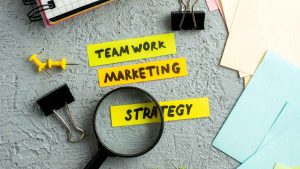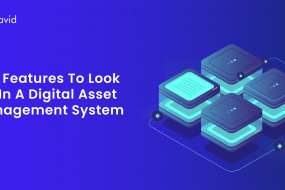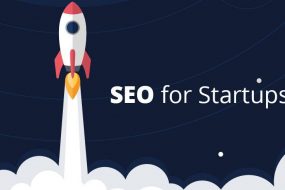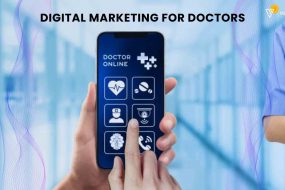
Full Stack Marketing integrates both traditional and digital marketing channels to provide customers with a seamless experience across all touchpoints. This holistic approach offers businesses many benefits if executed effectively. However, mastering Full Stack Marketing requires specific strategies that optimize cross-channel efforts and target customers at every stage of their journey.
Businesses must leverage data, test and optimize continually, develop an omnichannel experience, integrate silos, and nurture audiences across mediums. When done right, Full Stack Marketing can enhance reach, improve performance, and strengthen competitive positioning. This blog will be focused on identifying and discussing some of the strategies that can be used by businesses for marketing full-stack marketing.
What is Full-Stack Marketing?
Full-Stack Marketing refers to a comprehensive approach to marketing that encompasses a broad range of strategies, channels, and skills across both traditional and digital marketing disciplines. The full stack marketing meaning is simple as it gets. It involves understanding and integrating various aspects of marketing to create cohesive and effective campaigns that reach and engage target audiences across multiple touchpoints.
In Full-Stack Marketing, marketers have a holistic view of the entire marketing process, from strategy development to implementation and measurement. They possess a diverse skill set that allows them to handle different marketing functions, including market research, branding, content creation, digital advertising, social media marketing, search engine optimization (SEO), email marketing, analytics, and more.
The term “full-stack” is derived from the software development concept of full-stack developers who are proficient in both front-end and back-end development. Similarly, full-stack marketers have a deep understanding of various marketing disciplines, enabling them to navigate and optimize different channels and tactics.
Importance and benefits of mastering Full Stack Marketing
Full Stack Marketing is an approach that combines both offline and online marketing strategies to provide an end-to-end customer experience. It involves understanding all aspects of the customer journey and utilizing the right mix of marketing channels and tactics at each stage. Mastering Full Stack Marketing is important for businesses for several reasons:
- Reach more customers: By using both online and offline channels, businesses can significantly expand their potential customer base.
- Improve customer experience: By providing consistency across channels, Full Stack Marketing offers customers a more seamless and cohesive experience.
- Boost brand awareness: An integrated marketing strategy that leverages multiple channels can help build stronger brand recognition and recall.
- Increase conversion rates: Customers who interact with a brand through multiple channels are more likely to convert into paying customers.
- Improve ROI: Full Stack Marketing aims to optimize marketing spending by utilizing the most effective channels for each stage of the funnel.
- Stay competitive: As customers increasingly engage with brands across different channels, businesses need an integrated approach to keep up.
- Adapt to changing behaviors: Full Stack Marketing helps brands pivot and evolve their strategies as customer behaviors and preferences change over time.
- Access better data insights: Full Stack Marketing provides data and insights across channels that inform smarter marketing decisions.
Mastering Full Stack Marketing allows businesses to engage customers more effectively, increase revenue, enhance the customer experience, and gain competitive advantages. The benefits come from a holistic, omnichannel, and integrated approach that considers all parts of the marketing funnel and stack.
Components of Full Stack Marketing
Full Stack Marketing refers to utilizing both online and offline channels in an integrated way to engage customers throughout their journey. It involves understanding and optimizing all parts of the marketing “stack” from awareness to conversion.
The key components of a Full Stack Marketing approach include traditional offline strategies combined with modern digital and social media techniques. On the offline side, this may involve print ads, TV commercials, direct mail, in-store promotions, events, and PR campaigns. These aim to build initial awareness and consideration among target audiences.
On the online side, Full Stack Marketing leverages digital channels like search engine optimization, content marketing, email campaigns, social media, online ads, and e-commerce to qualify leads, nurture relationships and convert customers. Online channels allow for more personalization, retargeting, and measurement of performance.
Data and analytics are another core component, that allows marketers to gain insights from customers’ cross-channel interactions. This data informs the customization of messages, offers, and experiences across both online and offline channels.
The final component is integration – the ability to synchronize marketing efforts and align goals, messaging, branding, and data across the entire marketing stack. Customers now switch seamlessly between channels, so brands must ensure consistency and cohesion in their presence on all mediums.
Taken together, these online, offline, data-driven, and integrated components form the “full stack” of an effective modern marketing approach that can optimize spending and grow revenue. It can also enhance customer experiences across multiple touchpoints and over the lifetime of the customer relationship.
Key elements of Full-Stack Marketing include:
- Strategy Development: Full-stack marketers develop comprehensive marketing strategies that align with business goals, target audience preferences, and market trends. They consider both traditional and digital marketing channels and create integrated campaigns that deliver consistent messaging across various platforms.
- Content Creation: Full-stack marketers understand the importance of compelling and engaging content. They create a wide range of content assets, including blog posts, articles, videos, infographics, social media posts, and email newsletters. These assets are tailored to resonate with the target audience and support the overall marketing objectives.
- Digital Advertising: Full-stack marketers are well-versed in digital advertising platforms such as Google Ads, social media advertising, programmatic advertising, and display advertising. They create and manage advertising campaigns that target specific audiences, optimize ad performance, and track key metrics to ensure a positive return on investment (ROI).
- Social Media Marketing: Full-stack marketers leverage social media platforms to build brand awareness, engage with the audience, and drive website traffic. They develop social media strategies, create and schedule content, engage with followers, and monitor social media analytics to measure campaign effectiveness. The full stack marketing definition explains it all.
- SEO and Website Optimization: Full-stack marketers understand the importance of search engine optimization (SEO) to improve organic visibility and website rankings. They optimize website content, meta tags, and site structure, conduct keyword research, and analyze website analytics to enhance user experience and drive organic traffic. A best way is also to join a full stack marketing courses.
- Email Marketing: Full-stack marketers utilize email marketing campaigns to nurture leads, engage with customers, and drive conversions. They develop email marketing strategies, create targeted email campaigns, segment the audience, and measure the effectiveness of email campaigns through metrics like open rates, click-through rates, and conversions. A full stack marketing agency can help your business.
- Analytics and Measurement: Full-stack marketers are data-driven and use analytics tools to track and measure the performance of their marketing efforts. The full stack marketing team aims to analyze key metrics, such as website traffic, conversion rates, engagement levels, and ROI, to optimize campaigns, make data-backed decisions, and drive continuous improvement.
By adopting a Full-Stack Marketing role approach, businesses can leverage the strengths of various marketing channels and strategies to create cohesive and impactful campaigns. This comprehensive approach allows marketers to reach their target audience effectively, maximize marketing ROI, and achieve overall business objectives.
Top 6 Strategies for Mastering Full-Stack Marketing
Here is a list of top 6 full-stack marketing strategies for business.
1. The marketing funnel reaches customers

Full Stack Marketing requires an integrated approach that considers all parts of the marketing funnel and reaches customers across multiple channels. To master this holistic strategy, businesses should focus on a few key areas:
- Understand the customer journey – Map out all stages and touchpoints in how customers discover, engage with, and purchase from your brand. Identify which channels work best at each stage.
- Develop an omnichannel experience – Ensure consistency in messaging, offers, pricing, and customer service across all channels. It will help customers receive a seamless experience no matter where they engage with your brand.
- Leverage data and analytics – Collect, analyze, and act on data from across channels to optimize marketing strategies, personalize content and messages, and drive the right experiences for individual customers.
- Integrate systems and silos – Break down data, technology, and organizational silos to share customer information, optimize cross-channel campaigns, and align goals and strategies across marketing departments and functions.
2. Continuous learning and staying up-to-date

In a fast-changing business environment driven by ever-evolving technologies and customer demands, continuous learning and staying up-to-date have become critical skills for professionals. Business success today requires not only mastering existing expertise but constantly acquiring new knowledge and skills. Individuals must continually learn about new tools, techniques, trends, best practices, and innovations relevant to their work.
Simply relying on what was learned during formal education or training is no longer sufficient. Instead, companies seek talent that embraces learning as a habit and proactively stays up to date with the latest developments. This requires making time for learning, exploring new ideas, following industry news, attending relevant events, interacting with experts, networking with peers, researching online resources, taking related courses, and practicing and applying new skills on the job.
Continuous learning helps professionals stay competitive, advance their careers, contribute more value, innovate, solve problems creatively, and adapt to change. It will ultimately help in empowering both them and their organizations to achieve sustained growth and success.
3. Building a strong foundation in core marketing principles

Marketing success depends on having a solid grasp of certain fundamental principles that underlie effective strategies and tactics. These core concepts form the building blocks for more advanced skills and knowledge. Some key principles to focus on include understanding:
- The customer journey and buyer personas
- The marketing funnel and how to drive leads through each stage
- The different components of the marketing mix and how they work together
- The value of an integrated
- Multi-channel approach
- The importance of consistent branding across mediums
- Basics of market segmentation and targeting
- Fundamental data analysis techniques
- Metrics that matter for measuring performance, and best practices for content creation and social media engagement.
Mastering these core marketing principles involves reading widely, studying real-world examples, and engaging in practice and application. Individuals who take the time to build this foundation will be better prepared to evaluate new trends and tools critically, implement techniques effectively, and adapt quickly as strategies evolve.
4. Leveraging automation and technology

Modern marketing relies heavily on automation and technology to maximize efficiency, expand the reach and enhance customer experiences. Leveraging the right tools can significantly improve performance while freeing up time for higher-value tasks. Some ways technology and automation can boost marketing include:
- Automating routine processes to save time on repetitive work;
- Utilizing artificial intelligence to personalize content at scale;
- Running A/B tests and optimizations continuously to improve results;
- Gathering and analyzing customer data from multiple sources to gain valuable insights;
- Managing campaigns, content, and relationships across channels through integrated software;
- Automating communication sequences and drip campaigns for lead nurturing and re-engagement;
- Utilizing chatbots and virtual assistants to provide self-service customer support; outsourcing certain tasks to specialist platforms.
While automation should complement rather than replace human marketers, it offers many benefits when used strategically to augment the work of full-stack marketing review.
5. Implementing an integrated marketing strategy

An integrated marketing strategy involves aligning and coordinating different marketing channels, tactics, and messages to maximize impact and efficiency. Channels like search, social media, email, offline ads, and events are used in a synergistic way to reinforce each other and support broader business goals. Integration helps avoid redundancy across channels, and economies of wasted marketing spend and provides customers with a consistent brand experience.
Developing an integrated marketing strategy requires identifying touchpoints throughout the customer journey, analyzing the efficacy of each channel at different stages, setting correlated goals and key metrics across channels, and creating optimized content and messaging. Integrated marketing aligns traditionally siloed teams, consolidates customer insights, and focuses resources on initiatives that drive the highest returns while strengthening the brand holistically across channels.
6. Overcoming Challenges in Full-Stack Marketing

Businesses face many challenges in implementing a successful Full Stack marketing strategy. Integrating online and offline channels can be complex, expensive, and time-consuming. Silos often remain between digital and traditional teams. It is difficult to unify data, messaging, and branding across channels. Measuring the performance of individual tactics within an integrated approach is challenging. Technology investments may not deliver the expected results. Keeping up with the constant changes in digital and social media requires significant resources.
However, with the right planning, people, and processes in place, companies can overcome these issues. The key is to start small, test concepts, learn from mistakes, ramp up efforts gradually, and establish a culture that embraces experimentation and adaptability. With persistence and innovation, Full Stack marketing provides opportunities to transform customer experiences and business value.
Conclusion
Mastering Full Stack Marketing requires an integrated, data-driven, and omnichannel strategy that considers all parts of the marketing funnel and stack. Businesses must understand customers, leverage multiple channels effectively, integrate systems and data, and continually optimize and adapt to change. When done right, Full Stack Marketing can unlock significant benefits like increasing reach, improving customer experience, boosting conversion rates, optimizing spend, and gaining competitive advantages. Full holistic execution across the marketing mix ultimately determines success in today’s connected world.











